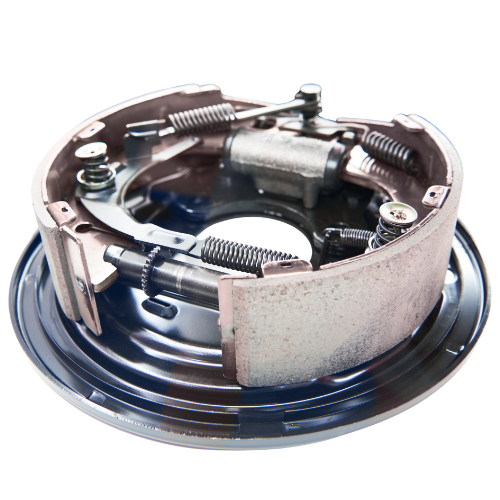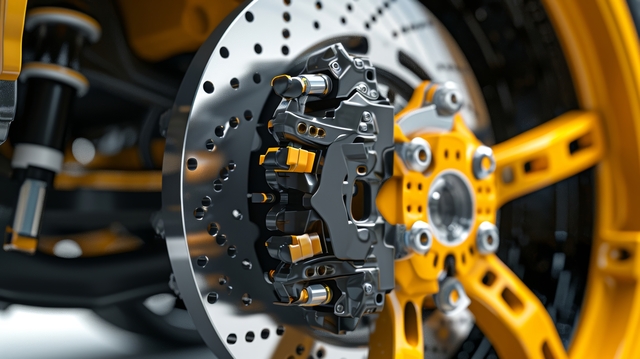Explore the four key components that make up a truck’s brake system—engineered to ensure safe, reliable, and powerful stopping performance on every road.

This article explores the latest advancements in air brake technology and how these developments are shaping the future of braking systems.
Unlike hydraulic brakes, which rely on fluid pressure, air brakes use compressed air to activate the braking system. This makes them highly effective for large vehicles that require strong and consistent stopping power. The use of air also means there is no risk of fluid leaks, ensuring the braking system remains reliable even under heavy use.
However, traditional air brake systems require regular maintenance to prevent issues such as brake fade, air leaks, and uneven wear. This has led to the development of new technologies designed to improve durability, reduce manual adjustments, and enhance overall braking performance.
Brake chambers play a crucial role in converting air pressure into mechanical force to engage the brakes. Recent advancements in brake chamber technology focus on increasing durability and reducing maintenance needs.
These improvements make brake chambers more reliable while minimising downtime for truck and trailer operators.
Slack adjusters ensure that brake shoes maintain the correct distance from the brake drum, preventing excessive wear and maintaining consistent braking force. Traditional manual slack adjusters require routine adjustments, but new innovations are simplifying this process.
By eliminating the need for frequent manual adjustments, these advancements improve safety and reduce the risk of brake system failures.
Brake line benders are essential tools used to shape and install brake lines without causing damage. The latest developments in this area focus on improving precision and ease of use.
These upgrades contribute to a safer braking system by ensuring that air brake lines are installed with precision.

Brake calipers and brake shoes play a vital role in stopping power by applying pressure to the braking surface. The latest innovations in these components focus on improving heat dissipation and wear resistance.
These improvements make air brake systems more efficient, ensuring consistent braking power even under extreme conditions.

Beyond individual component upgrades, the future of air brakes is being shaped by larger technological advancements that enhance safety and efficiency.
As the trucking industry continues to evolve, air brakes will continue to see improvements that prioritise safety, durability, and ease of maintenance. Some key trends to watch include:
These innovations will not only make air brake systems more reliable but also help fleet operators reduce operational costs and minimise downtime.
1. Are automatic slack adjusters better than manual ones?
Yes, automatic slack adjusters reduce the need for manual adjustments and help maintain optimal brake performance, improving safety and consistency.
2. How do smart sensors improve air brake systems?
Smart sensors provide real-time data on brake wear and temperature, allowing for predictive maintenance and reducing the risk of unexpected failures.
3. What are the main benefits of using corrosion-resistant materials in brake chambers?
Corrosion-resistant materials extend the lifespan of brake chambers, reduce maintenance costs, and improve overall reliability in harsh weather conditions.
4. Can modern air brakes integrate with driver-assistance systems?
Yes, new air brake systems are being designed to work with ADAS technologies, enabling features like automatic emergency braking for added safety.
5. Will air brakes play a role in autonomous trucks?
Yes, as self-driving truck technology advances, air brakes will be adapted to support automated braking functions, ensuring safe and reliable operation.
The future of air brakes is centred around innovation, with manufacturers focusing on improved materials, automation, and digital diagnostics to enhance performance and safety. From smarter brake chambers to automatic slack adjusters, these advancements are making air brake systems more reliable and efficient than ever before.
As technology continues to evolve, air brakes will remain a key component in the safety and functionality of heavy-duty vehicles, helping to reduce maintenance needs while improving overall road safety.